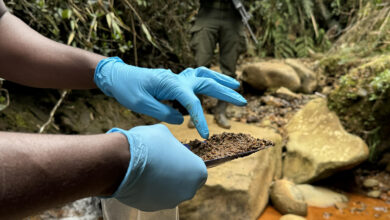South America’s Forests Face a Crisis of Tree Extinction

The Atlantic Forest of South America, once among the planet’s most diverse and impressive arboreal regions, is now facing a dire environmental crisis. A recent analysis led by Renato de Lima from the University of São Paulo’s School of Agriculture reveals that a staggering two-thirds of the forest’s 4,950 tree species are threatened, including many endemic species with limited geographical distribution. This study provides a stark reminder of the vulnerability of one of the world’s critical biodiversity hotspots.
The Atlantic Forest in Peril
The Atlantic Forest, stretching from Brazil’s southern coast to Paraguay’s interiors, is in peril. Decades of logging, agricultural expansion, and urban growth from burgeoning cities like São Paulo and Rio de Janeiro have fragmented this once-continuous forest.
The research points to the forest’s immediate threats and extends its implications globally. The findings suggest that trees could be “one of the most threatened groups of organisms on the planet.” This alarming statement is based on extrapolating the study’s findings to tree species worldwide.
The research underscores the critical role of the International Union for Conservation of Nature’s (IUCN) Red List, a globally recognized inventory assessing the extinction risk of species based on various criteria. Despite the List’s importance, detailed assessments of biodiversity hotspots remain scarce, particularly in tropical regions where the most threatened species still need to be made available. This gap is due to the time and resources required for species-by-species evaluations.
Automated Method to Assess Threats
Lima and his team developed an automated quantitative method based on the IUCN Red List’s categories and criteria to address this challenge. Their approach evaluated the conservation status of 4,950 tree species in the South American Atlantic Forest, a data-rich biodiversity hotspot compared to other tropical forest regions.
Utilizing herbarium data, forest inventory tree counts, species life histories, commercial uses, and extensive habitat loss data, the team categorized about 65% of all species and 82% of endemic species as threatened. Remarkably, while the assessment rediscovered five species previously classified as extinct on the Red List, it identified thirteen endemic trees that are possibly extinct.
The study’s broader implications are profound. Applying their findings to the world’s eighteen central tropical forests, the researchers estimate that between 20,504 and 24,910 tropical tree species (35-43% of the world’s tree species) are likely threatened with extinction due solely to habitat loss. This projection places trees as one of the most endangered organism groups globally, a sobering reality that underscores the urgency of conservation efforts.
Forests in Peril: Biodiversity and Ecosystem Services
The Atlantic Forest’s plight is emblematic of the broader state of the world’s forests. The relationship between species threat and habitat loss, as demonstrated in the study, highlights the critical importance of preserving natural habitats to maintain biodiversity.
The loss of these trees not only means the disappearance of individual species but also represents a substantial blow to the ecosystem services they provide, such as carbon sequestration, soil stabilization, and sustaining complex ecological networks.
This research also raises important questions about global environmental policy and conservation strategies. While well-intentioned, current efforts to curb biodiversity loss may only be sufficient with a comprehensive understanding of the specific threats facing different species. The study emphasizes the need for targeted conservation tools that can rapidly assess and address the risks to biodiversity in hotspots like the Atlantic Forest.
Interconnectedness of Global Ecosystems
Moreover, the study underscores the interconnectedness of global ecosystems. The fate of the Atlantic Forest is not an isolated issue but a matter of global concern. The potential extinction of a significant portion of the world’s tree species calls for international cooperation and a united effort in conservation strategies.
This includes protecting existing forests, restoring degraded ones, and rethinking approaches to urban expansion and agricultural practices that negatively affect these vital ecosystems.
This groundbreaking study is a wake-up call to the world about the fragility of our planet’s forests and the urgent need to protect them. The Atlantic Forest of South America, a symbol of natural abundance and diversity, now reflects a crisis that extends far beyond its borders. It’s a crisis that demands immediate action, innovative conservation strategies, and a renewed commitment to preserving the natural world for future generations. The survival of thousands of tree species and the health of our planet hinge on our ability to respond effectively to this environmental challenge.





